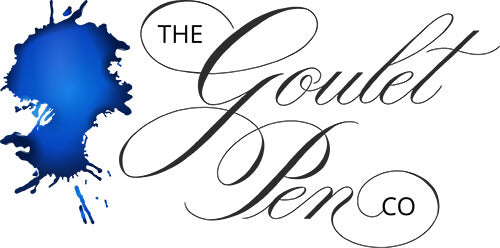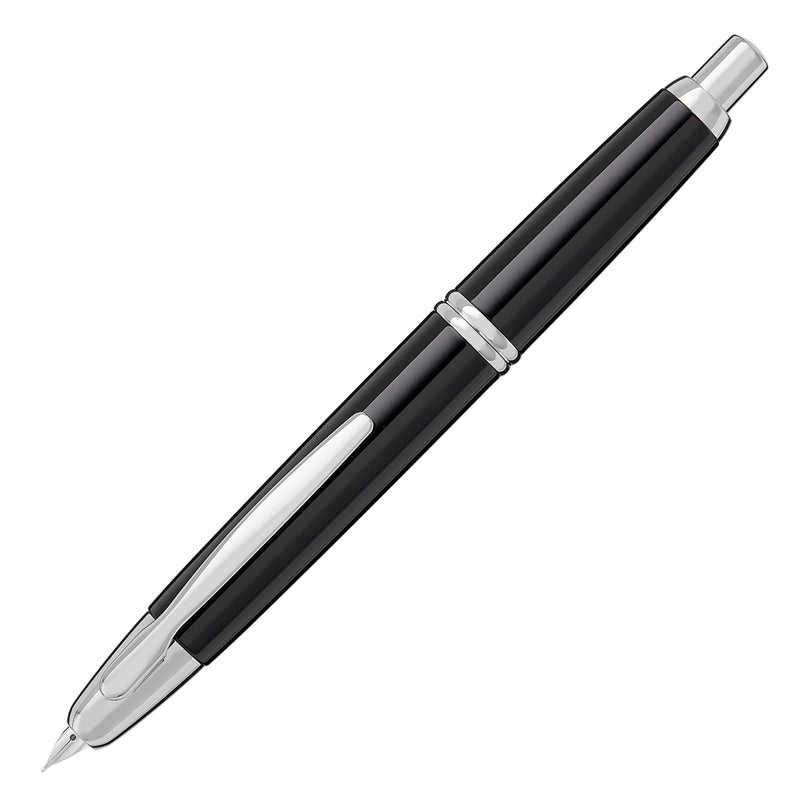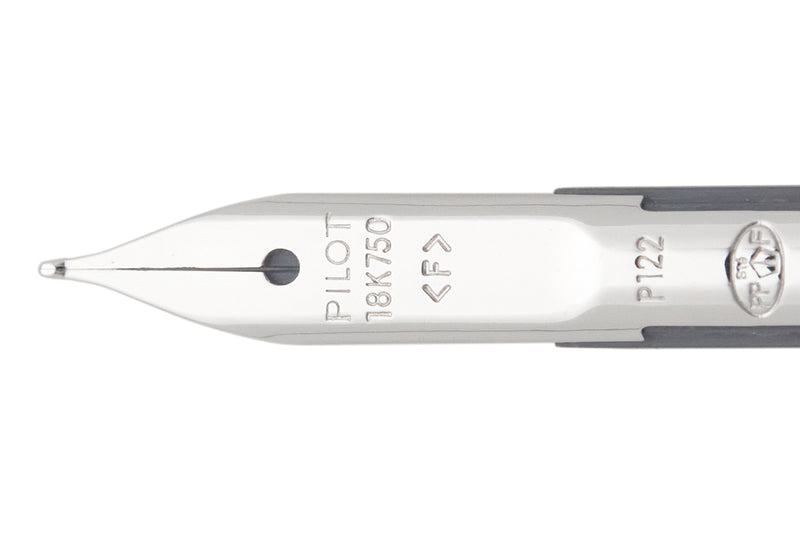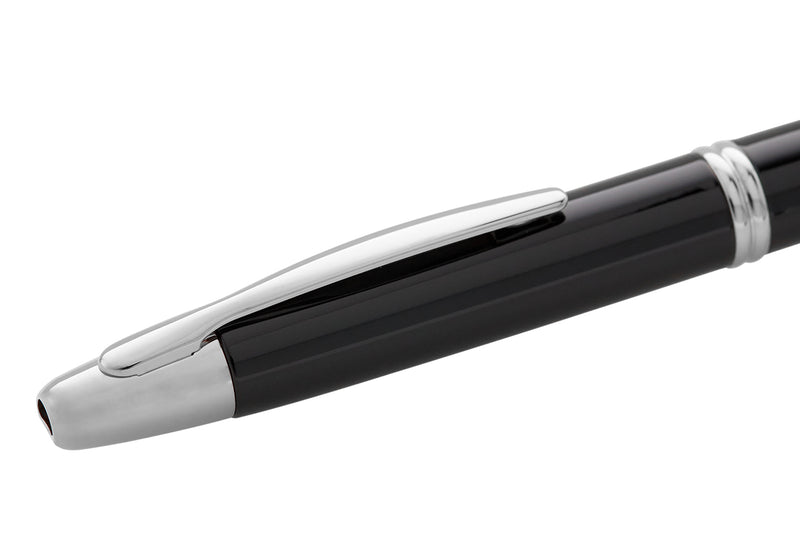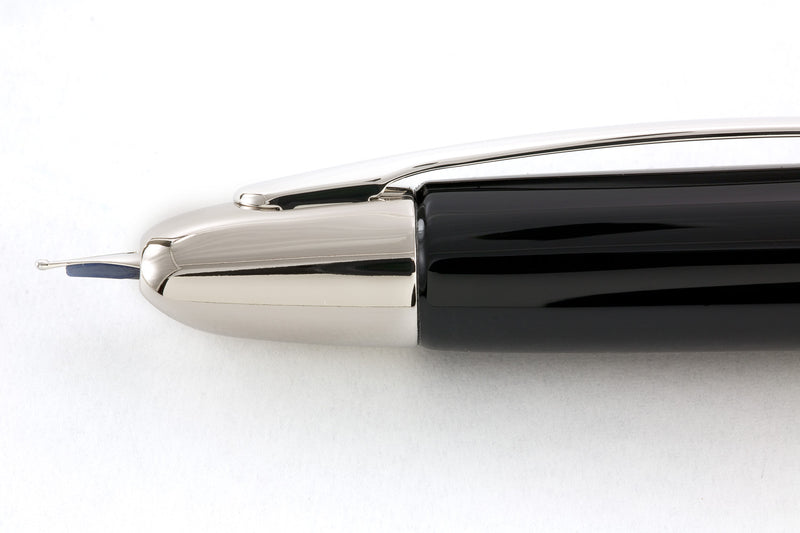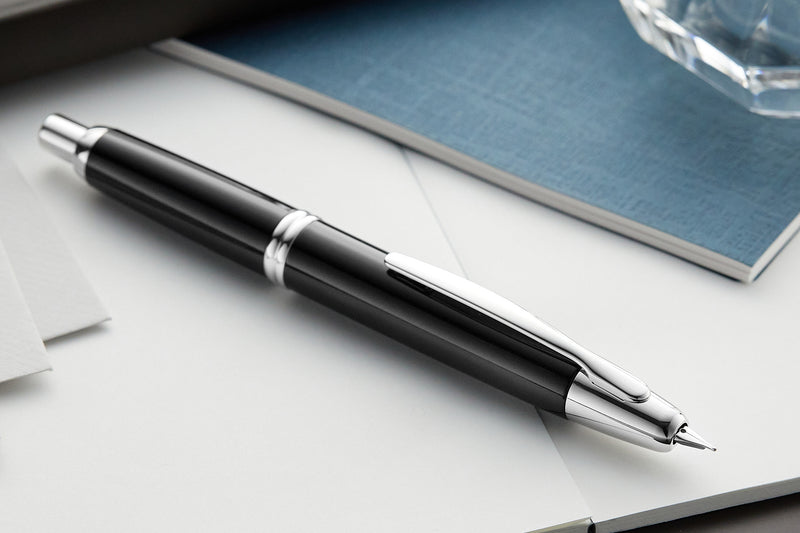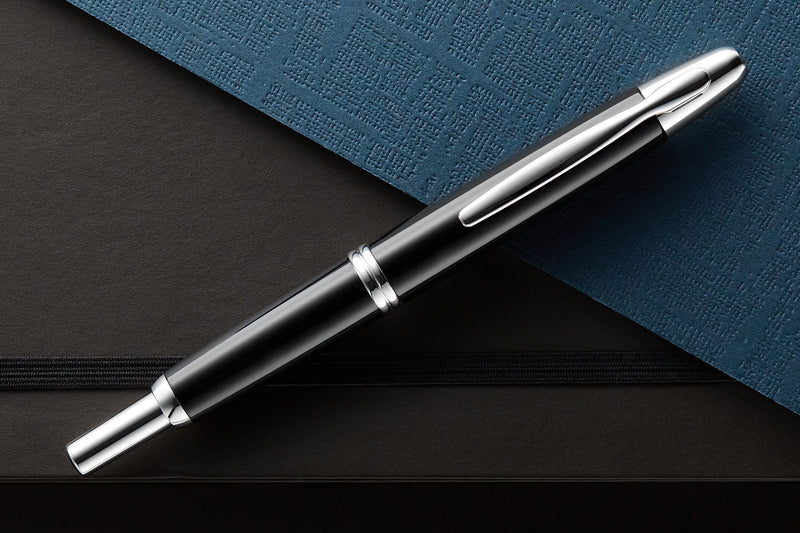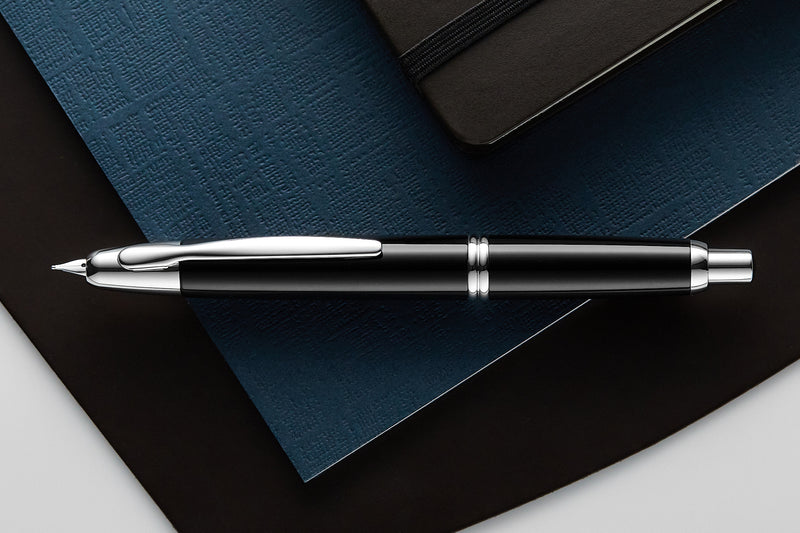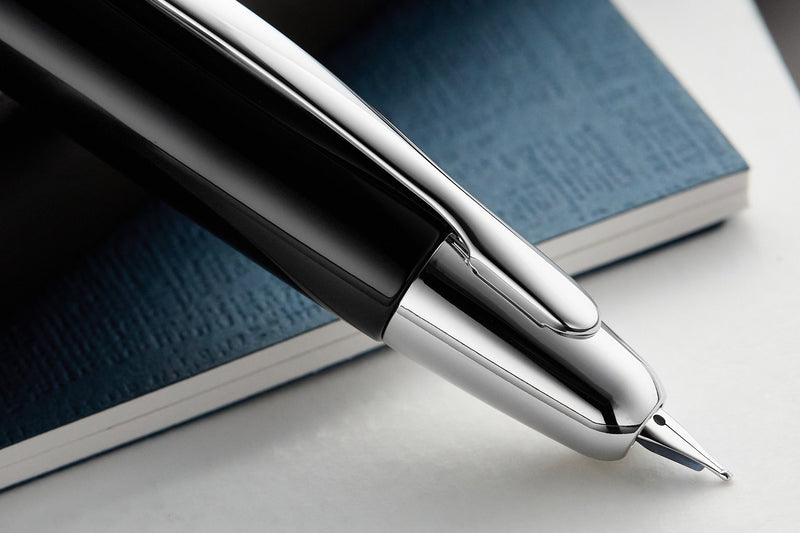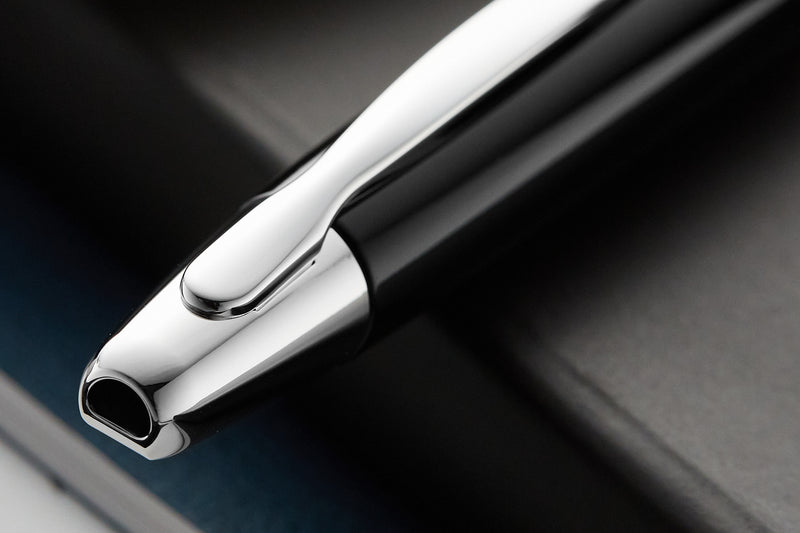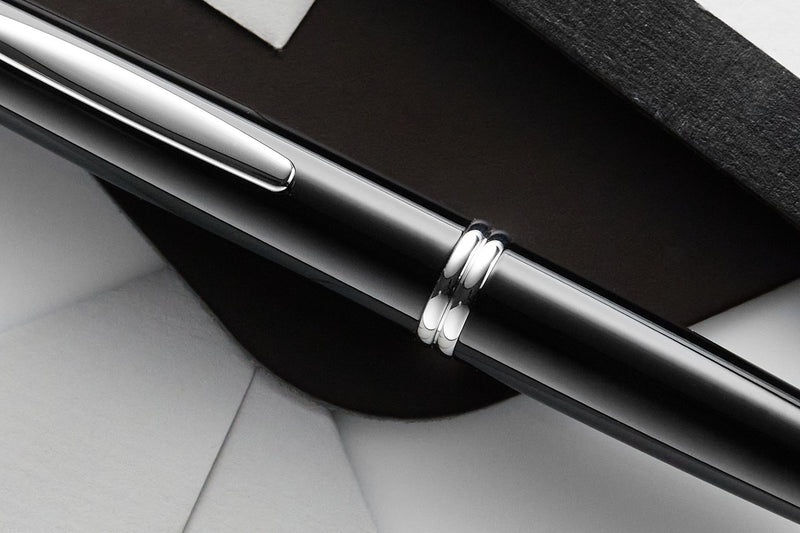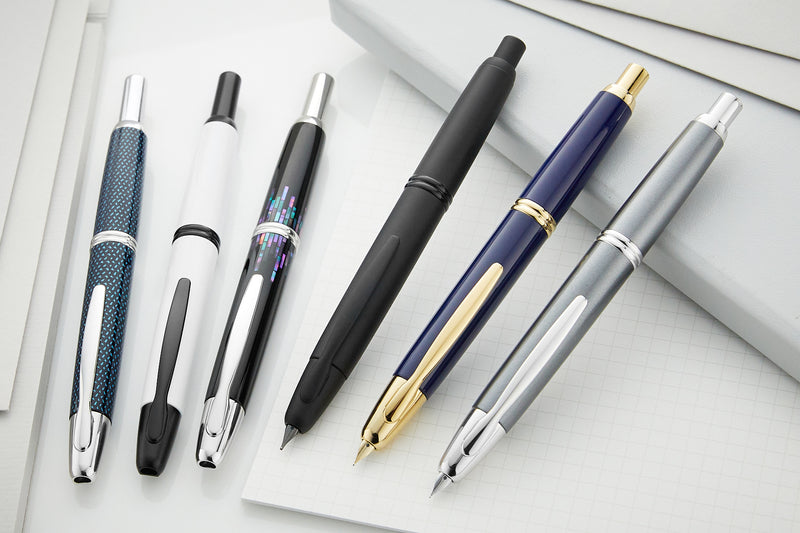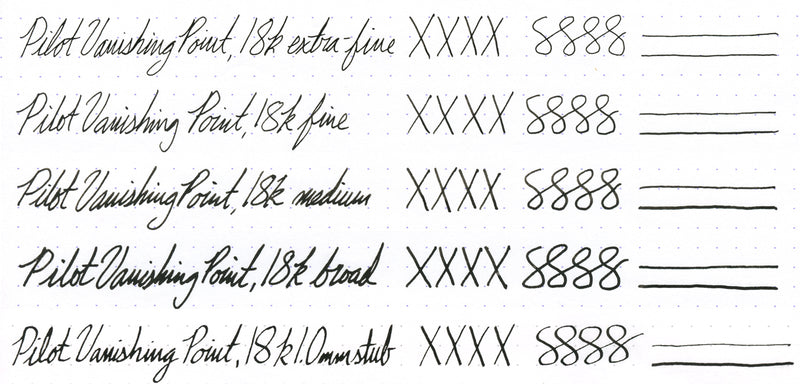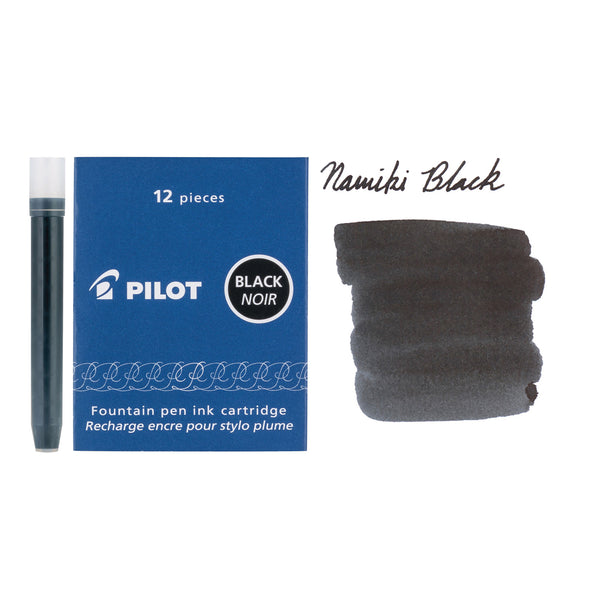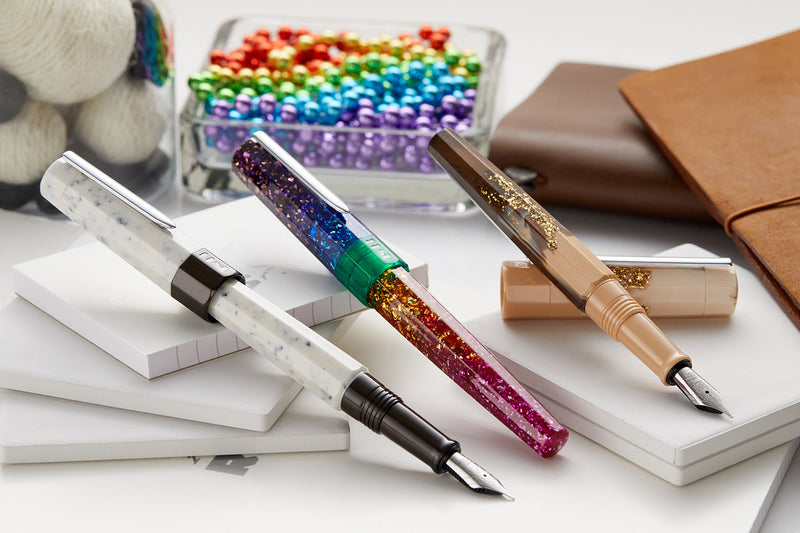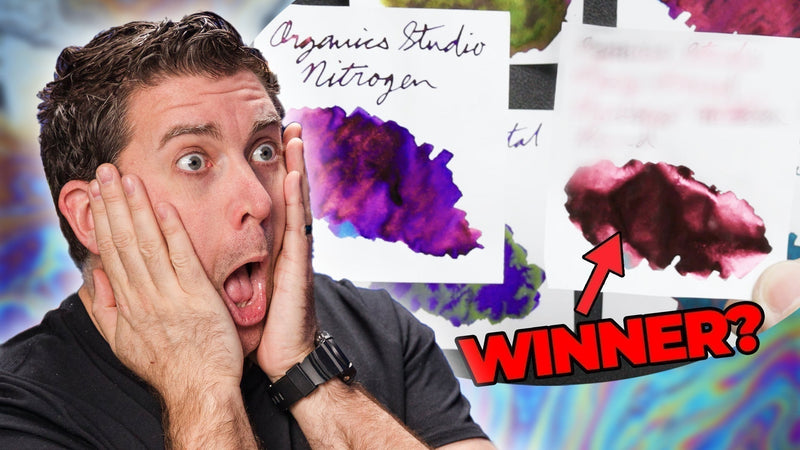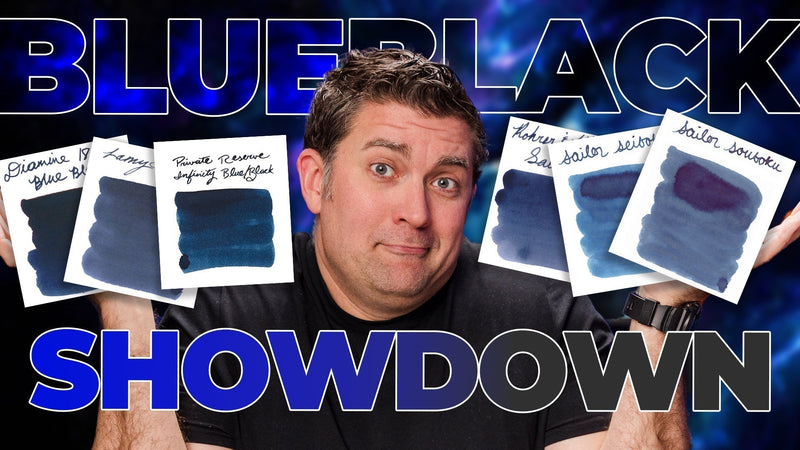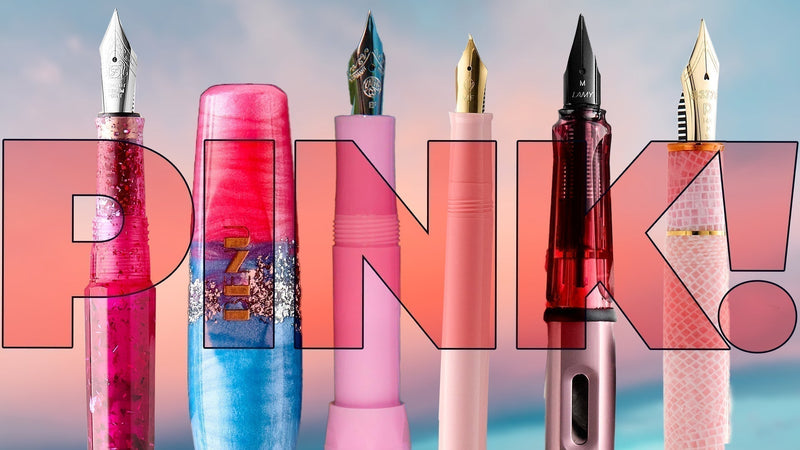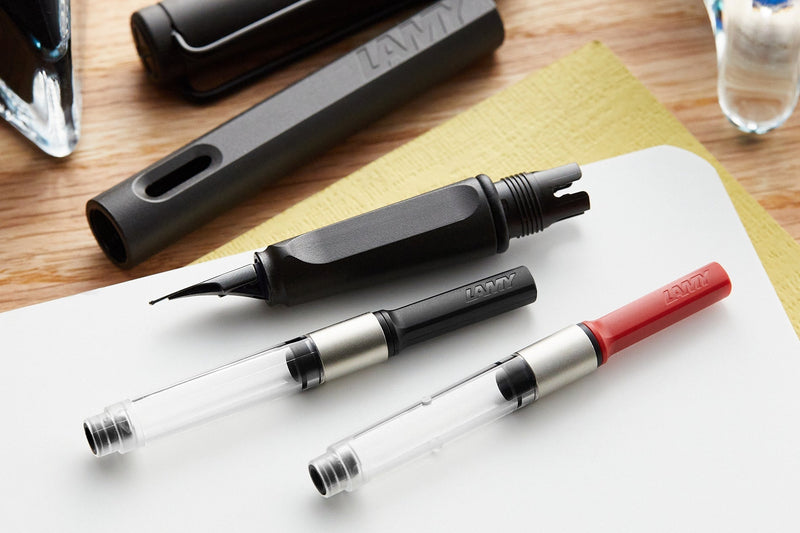Pilot Vanishing Point Fountain Pen - Black/Rhodium
This iconic Pilot Vanishing Point fountain pen has a shiny black barrel with rhodium accents. This fountain pen comes with a retractable rhodium-plated 18k gold nib - just click to expose or retract the nib. A hidden trap door helps keep the nib from drying out when not in use. A Pilot CON-40 converter is included with this pen, as well as a Pilot ink cartridge. A metal cartridge cap is also included for use with the ink cartridge. Each Vanishing Point fountain pen is beautifully merchandised in a black gift box.
The Vanishing Point retractable fountain pen is a product rich in both history and performance. Its brilliant design and ingenious technology make it a pen for the new age. A larger size, durable metal body and attractive appointments make the Vanishing Point unmistakably unique.
Click here to shop all compatible Pilot ink cartridges.
- Condition
- New
- Brand
- Pilot
- Type
- Fountain Pens
- Color
- Black
- Demonstrator
Whether or not the barrel of the pen is translucent, allowing you to see the ink and filling mechanism inside.
- No
- Body Material
- Lacquered metal
- Cap Type
How the cap is opened/closed from the barrel of the pen. Some common options include Snap-Cap, Screw-Cap, Magnetic Cap, or Capless (no cap).
- Capless
- Compatible inks & refills
Which ink this pen will accept. Choices include bottled ink and various styles of pre-filled ink cartridges.
- Bottled ink, Proprietary Pilot ink cartridges
- Filling Mechanism
How the pen fills with ink. Click here to watch our video tutorial on common filling mechanisms.
- Cartridge, Converter
- Grip Material
- Metal
- Nib Size
- Extra-Fine, Fine
- Nib Color
- Silver
- Nib Material
- 18k Gold
- Postable
Whether or not the cap fits securely onto the back of the barrel when open.
- No
- Retractable
Whether or not the nib/tip can retract into the body of the pen (usually for click or twist-open style pens).
- Yes
- Trim
- Silver
- Diameter - Body
- 13mm (0.5in)
- Diameter - Grip (mm)
Measured from the place most people choose to rest their fingers, which varies with each pen.
- 11.8mm
- Length - Body
The measurement from the back end of the barrel to the tip of the nib.
- 140mm (5.5in)
- Length - Nib
The measured length of the visible portion of the nib when it is installed in the pen, from grip to tip.
- 8mm (0.3in)
- Length - Overall (Closed)
- 140mm (5.5in)
- Weight - Body
If a converter is included with the pen, this weight is reflected in the total.
- 30g (1.1oz)
- Weight - Overall (g)
- 30.0g
- Max Ink Capacity - Cartridge
The maximum volume of ink that can fit in the pen when using a cartridge.
- 1.05ml
- Max Ink Capacity - Converter
The maximum volume of ink that can fit in the pen when using a converter.
- 0.82ml
